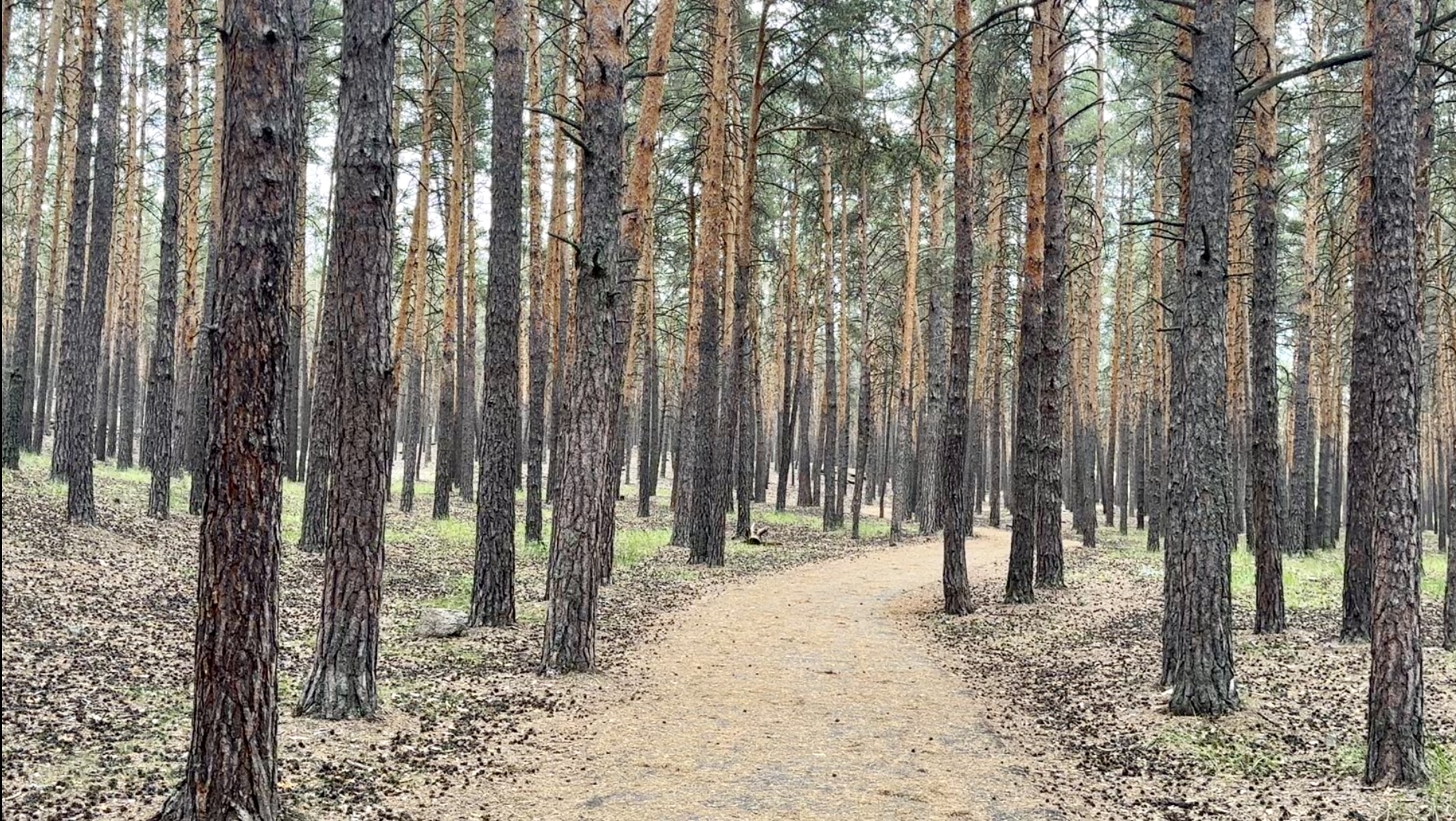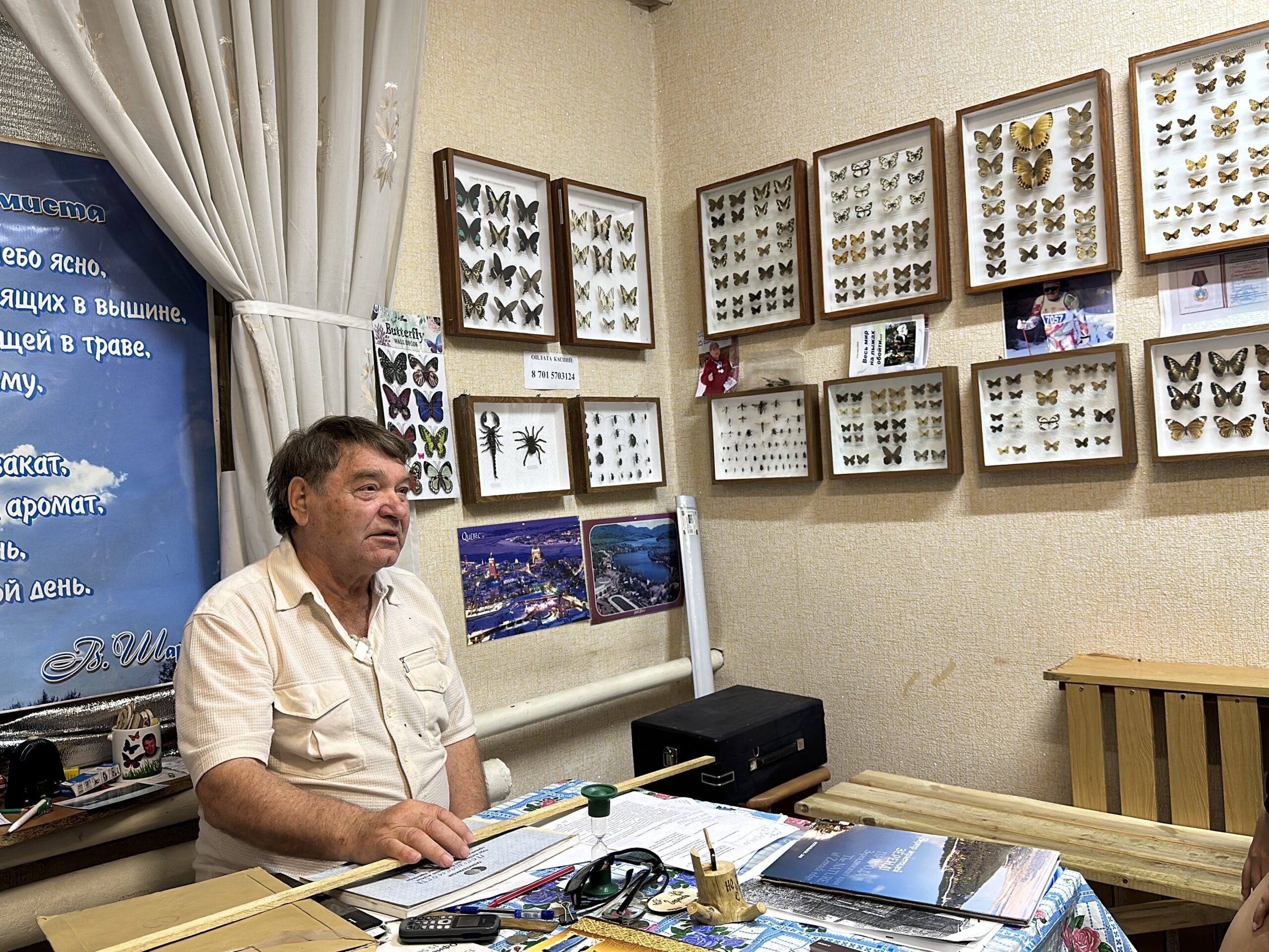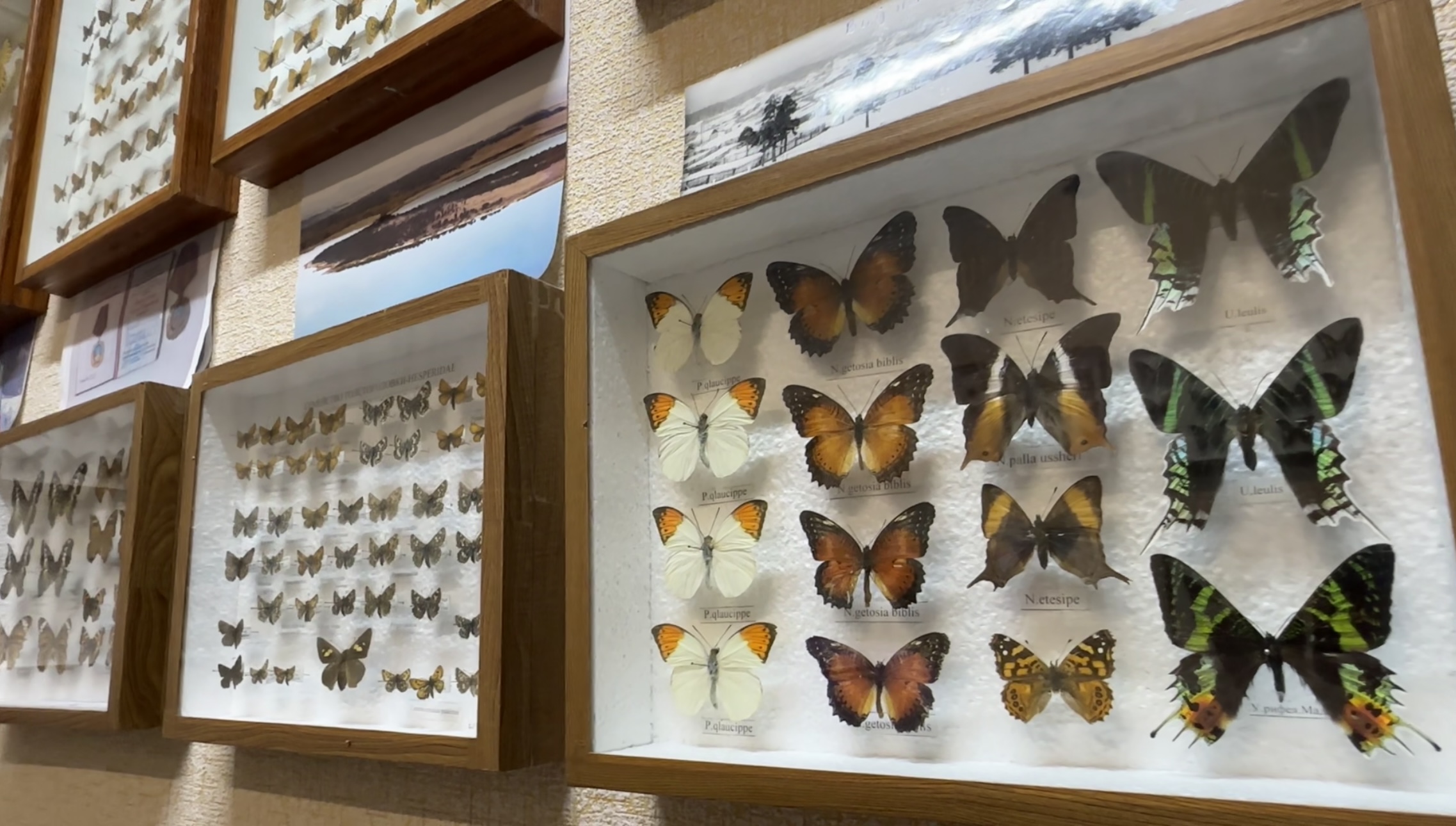AKMOLA REGION – A placid lake, welcoming pine woods, picturesque hike areas and the only butterfly museum in Kazakhstan defined a trip to Zerendi village as part of the Baitaq Zher (Vast Earth) project organized by the Eurasia Foundation of Central Asia in partnership with Chevron in late July.

The sky transformes into a canvas of captivating hues over Zerendi Lake. Photo credit: Aibarshyn Akhmetkali/The Astana Times. Click to see the map in full size. The map is designed by The Astana Times.
A comfortable 240-kilometer ride on the Astana-Schuchinsk motorway offers an easy route to the resort which could be a valuable alternative to the popular Burabai nature reserve.
The nature of Zerendi
A pretty palette of green, gray and yellow defines the scenery of Zerendi village with the same-named lake, which is part of the Kokshetau national nature park.

On the way up to Smolnaya (rasin) hill which is around 450 meters above sea level. Photo credit: Aibarshyn Akhmetkali/The Astana Times
The tour started with a picturesque walk through the pine forest up to the Smolnaya (rasin) hill which is around 450 meters above sea level.
The climb over rocky passes is far gentler than one might expect and the pine forests provide plentiful shade and fresh air.
Very soon one can see the first wildlife: a lively squirrel, a rather busier woodpecker, a raven with feathers as dark as the forest in the night, and a variety of sparrows.
At the highest point of Smolnaya hill, the rewards are plentiful with pine wood on one side and pristine Zerendi lake on the other.

The pine forests provide plentiful shade and fresh air. Photo credit: Aibarshyn Akhmetkali/The Astana Times
“As we’re coming down, we see moss here and there. It shows that we have a very clean place here in the woods because moss doesn’t grow in dirty places,” said tour guide Olesya Rodina, as the group descended from the top viewpoint of the hill.
“Notice how the moss is on the north side of the pine tree, that’s how we can tell the direction when we don’t have a compass,” she noted.
After a sound night’s sleep, one could go for a refreshing dip in the Zerendi lake in the morning.
“There are several springs in the region that flow into our Zerendi lake. Our lake is three kilometers wide, five kilometers long and 21 kilometers in diameter. It is of a tectonic origin, meaning it was formed at the junction of two plates,” said Rodina.
Although there have always been settlements of nomads, the first buildings were built in 1816 with a large expedition of Cossacks, who found a nearby forest and the availability of water suitable for building houses and harvesting. In 1824, the first six families of Cossacks moved to Zerendi.
Now, Zerendi is home to around 9,000 people. Life here is busy: people work at state institutions, farm, harvest wood for export and develop domestic tourism.
The museum of butterflies
Another unexpected highlight of the hike in Zerendi included an endearing museum of a large collection of butterflies.

Valery Sharov offered insight into his collection of rarest butterflies. Photo credit: Aibarshyn Akhmetkali/The Astana Times
The weathered exterior of the old wooden house is unique in Kazakhstan, a home to over 2,000 butterfly species from 50 countries.
Here one finds one of the largest butterflies in the world, the Vietnamese butterfly which can have a wingspan of 25 centimeters.
Valery Sharov, the head of the museum and the collection’s owner, offered insight into his collection.
Polar butterflies live at up to 72 degrees polar latitudes and are noted for their lengthy anabiosis process and resistance to cold temperatures up to 50 degrees below Celsius.

The collection also includes the fastest butterfly, a venomous butterfly, and a butterfly used to detect minerals under the earth. Photo credit: Aibarshyn Akhmetkali/The Astana Times
“It deprives itself of all biological functions for four months, which means it doesn’t eat or drink. Isn’t it amazing? Deprivation of all biological functions is anabiosis. After four months, the butterfly recovers and continues to live in polar latitudes. They’re the longest-lived butterflies, living up to 10 months,” said Sharov.
The chameleon butterfly shows a variety of beautiful patterns from yellow and light blue to darker blue, brown and violet colors.
The collection also includes the fastest butterfly, a venomous butterfly, and a butterfly used to detect minerals under the earth.
The beauty of butterflies is “contagious,” according to Sharov. “You’ll come out of here even more beautiful inside and out,” he said.
Essential nature tips from the guide
The Kokshetau national nature park is rich with wildlife, home to more than 40 animal species, including wild boar, moose and even lynx.
The encounters between tourists and larger wildlife are rare but not unprecedented. Should you find yourself in such a situation, Rodina shared some useful tips so one can be adequately prepared.
“When a lynx walks through the trees, if it sees you as prey, it will immediately aim at your neck, at the artery. We take an ordinary stick and put it on our shoulders. The lynx will understand that it will not be able to defeat you from the first attempt and will not pounce on you anymore,” she said.
“If you encounter a wild boar, don’t look into its eyes because that’s considered a provocation. We can look at the nose. And never turn your back on him, just start backing up slowly,” Rodina said.
Wild animals attack humans only if they feel there is a threat to their offspring or if they consider humans a source of food.
One can come across numerous anthills on the hiking path.
“Ants in our area are active from mid-April as soon as the snow melts and until around October. In one day, they can remove up to 40,000 larvae of the pine sawfly (pest of young pine trees). So they are considered to be forest sanitarians,” said Rodina.
“You can also tell from the anthill what the weather is going to be like. When all the nose holes start to open up and get very big, it means we are going to have sunny weather, but if they start to close all their holes, that’s the first sign that it’s going to rain,” added Rodina.
She also shared a remedy for those who find themselves amidst the woods, besieged by mosquitoes without repellent spray.
“You can take a handkerchief and put it on the anthill. Gradually ants will cover this handkerchief with formic acid produced by the ants. Gently shake off the ants and apply it to your skin. No mosquito will bite you.”


